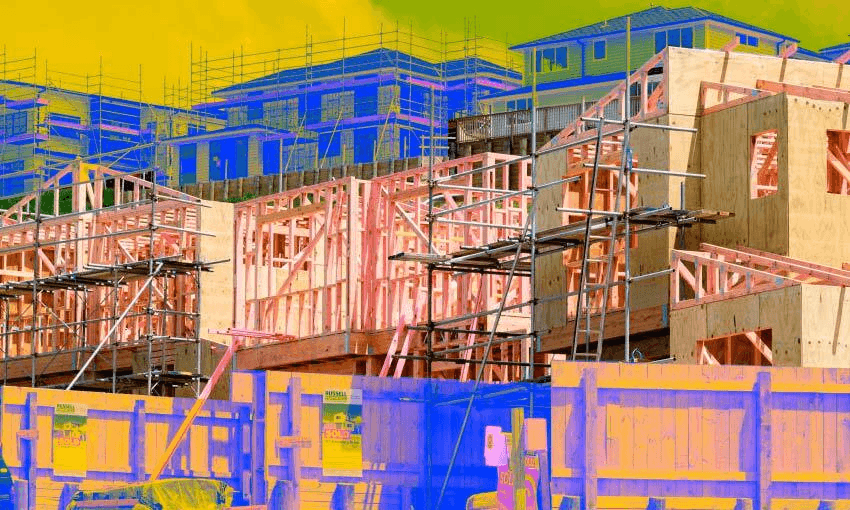A glimpse into a brighter future for Aotearoa’s lifelong renters.
While New Zealand’s build-to-rent market remains in its infancy, a leader in property development believes a significant opportunity exists with the emerging asset class to provide better quality rentals on terms friendly to both tenants and landlords.
New Ground Capital managing director Roy Thompson on Friday told attendees of the virtual 2021 Property Conference the challenges to the build-to-rent sector may be many but build-to-rent developments could help fix New Zealand’s housing crisis.
Houses built solely for renting give secure tenure to tenants and those locked out of owning a home by soaring house prices. In return for funding the development and being incentivised to look after the units for the long-term, landlords receive yearly rental yields and returns on the investment.
Early last week, listed property developer Kiwi Property announced it would build 295 apartments at Auckland’s Sylvia Park shopping mall, in what the company claimed would be New Zealand’s first major build-to-rent development. Chief executive Clive Mackenzie said the build-to-rent case was strong. “More than half of Aucklanders over the age of 15 currently rent, with this number expected to rise to 60% by 2043. This new asset class has the potential to play an important role in helping address the growing demand for rental accommodation and alleviate New Zealand’s housing shortfall.”
New Ground Capital’s Thompson said challenges were aplenty for the market, but they were not dissimilar to the challenges facing the build-to-sell market – the price and availability of land, construction costs and capacity, and red tape. Challenges unique to build-to-rent existed though, including unfavourable policy settings and unfamiliar institutional investors cautious about committing “large slugs” of long-term equity.
The residential property market – 1.8 million dwellings worth at least $1.4 trillion – is New Zealand’s largest capital market. The existing stock of 600,000 poor-quality rentals that house 1.4 million residents are leased by mostly “mum and dad” investors chasing capital gains. Thompson said a lot if not most of them were not willing to provide secure tenure above meeting their legal obligations. “So, if you ask us if there’s a significant opportunity to provide better quality rental housing on more tenant-friendly terms, we would say we absolutely think so.”
The build-to-rent sector would grow if investors had the appetite, he said. Coincidentally, the housing market desperately needs lots of additional supply, and build-to-rent (BTR) is well-positioned provided developments are encouraged. “In our view, BTR should be able to deliver large-scale, equity-funded supply, just as it has overseas, and it should be able to help catalyse a desperately needed transformation in rental housing standards in New Zealand.”
Jo Green, business development head of UK property-tech letting company Home Made, said the biggest barrier to attracting investment in build-to-rent developments is making the model viable.
European markets, for example, are similarly coming into existence and new developers had no track records. The lack of information has meant lenders see build-to-rent deals as high risk. Speaking virtually from the UK, Green said such developments have a role to play in helping address housing crises, including in accelerating supply, providing good-quality options, and underpinning projects to regenerate communities.
“The growth of the build-to-rent sector in any new area, in any new market requires a supportive regulatory environment, tailored private sector funding, bespoke design solutions that ensure the economic viability of private development projects and the public benefits of a dynamic rental market and increasing housing supply.”
The UK’s build-to-rent market has grown six-fold in the last five years, with tens of thousands of homes completed, under construction or in the works. Green said it was widely acknowledged that in the UK not enough good-quality houses have been delivered over the last 50 years to meet increasing demand. The current UK government has targeted at least 300,000 new homes for delivery each year, yet fewer than 170,000 were being built. Not since 1959 has a housing target been achieved. Here in New Zealand, the government set its first Kiwibuild target at 1000 homes built in under 12 months. They eventually met the 1000 home target in July this year, two years behind schedule.
Private renting was common after the second world war, only to decline for most of the 20th century. But legislative changes in the late 80s provided the conditions necessary for the sector to grow again. Green said the mix of residential tenure was changing in the UK as an increasing number of people moved toward renting due to lifestyle changes and unaffordable homeownership. While progress has been achieved, including explicit government recognition in July 2018, build-to-rent in the UK made up only 3% of the private rented sector. “But it does have seriously big ambitions”, Green said. Upon maturing, the market is forecast to be worth £500 billion, serving 1.7 million households, setting an example for the New Zealand market.
Since 2014, New Ground Capital has been a pioneer in the build-to-rent space, initiating the development of 543 new homes in Auckland and Queenstown, of which 60% are being kept as long-term rentals. Conference attendees heard tenancies lasted up to seven years and plans to extend tenure to 10 years were on the cards. Tenants could still leave at short notice if necessary, Thompson said. “It’s really about giving renting households their cake and allowing them to eat it as well.”



